Mehndi Design for Fingers
Mehndi, also known as henna, is an ancient form of body art that has transcended centuries and cultures to become a beloved tradition, especially in South Asia and the Middle East. Among the many ways to apply mehndi, finger designs hold a special place because they offer a delicate, intricate, and highly visible way to showcase artistry. Whether for weddings, festivals, or casual occasions, mehndi designs for fingers can elevate your look with grace and charm. In this article, we will explore the top 10 mehndi designs for fingers that combine traditional elegance with modern creativity, along with tips on how to perfect these designs.
Why Choose Mehndi Designs for Fingers?
Finger mehndi designs are unique because of their subtle yet striking appeal. Fingers are always on display, whether you’re typing, greeting, or gesturing, making them the perfect canvas for mehndi art. Unlike large, heavily patterned designs on the palms and arms, finger designs tend to be smaller and more delicate, allowing for a variety of styles that range from minimalist to highly ornate.
Moreover, finger mehndi designs are versatile. They can be standalone accents or complement more extensive mehndi work on the hands and arms. Their compact nature means they dry quickly and are less likely to smudge, which makes them practical for everyday wear. Many people choose finger mehndi designs when they want a quick, beautiful decoration that doesn’t take hours to apply.
Top 10 Mehndi Designs for Fingers
1. Classic Dotted Finger Tips Design
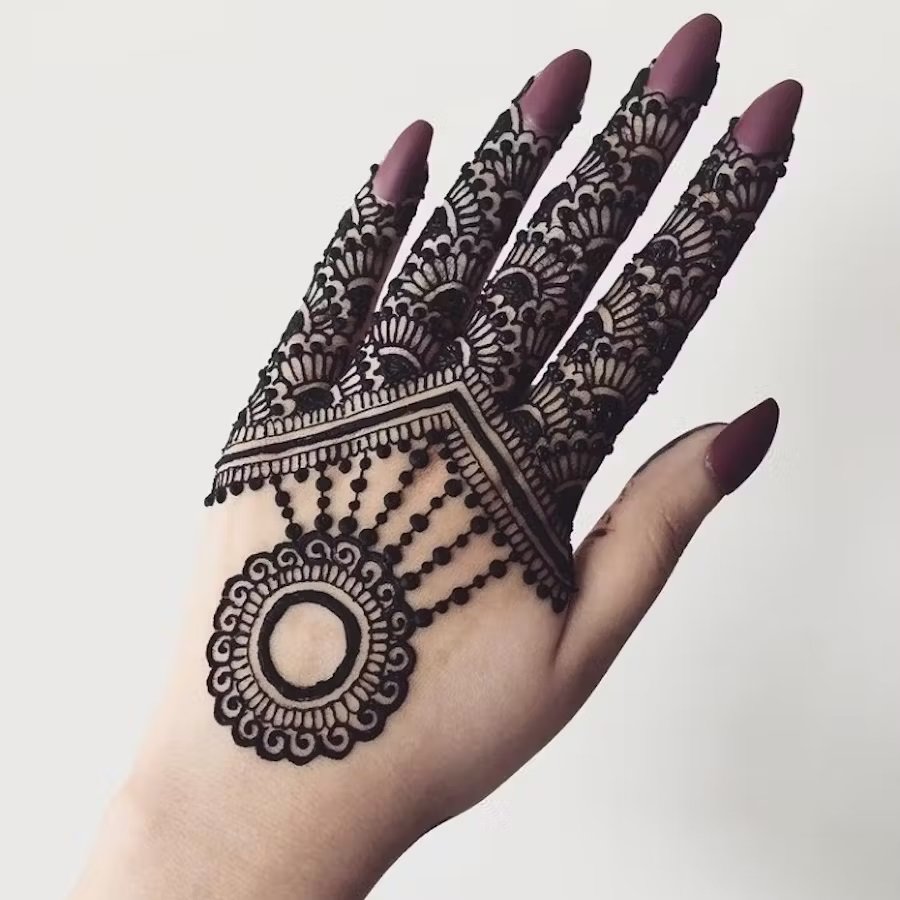
The simplest yet most elegant mehndi design for fingers is the dotted fingertip pattern. This design involves creating small dots or clusters of dots around the fingertips and nail edges. Although it appears minimalistic, it gives an instantly graceful and neat look.
The beauty of this design lies in its simplicity and ease of application. It’s perfect for those who prefer subtle mehndi without intricate patterns but still want a traditional touch. This style is also great for beginners because it doesn’t require much precision.
2. Floral Finger Patterns
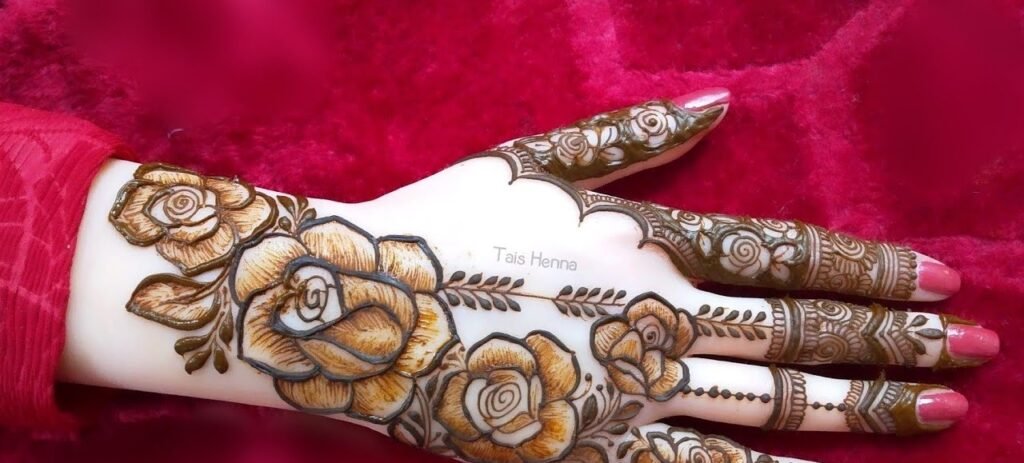
Floral motifs are a timeless choice in mehndi art, and applying them to fingers can create a delicate, feminine look. In this design, small flowers or vines wrap around each finger, sometimes extending just past the first knuckle. The design can feature petals, leaves, and even tiny buds.
Floral patterns on fingers are ideal for weddings and festivals as they symbolize beauty and growth. These designs are often paired with leaf chains or vines connecting multiple fingers for a cohesive appearance.
3. Geometric Finger Mehndi Designs
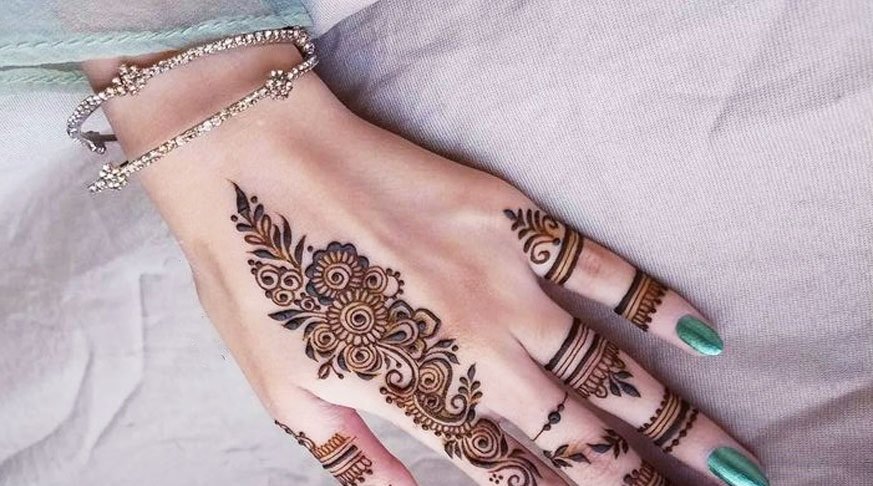
Geometric patterns add a modern twist to traditional mehndi. These designs use shapes such as triangles, squares, diamonds, and lines to create symmetrical and eye-catching patterns on the fingers.
One popular geometric finger design is the use of vertical lines combined with triangles pointing towards the fingertip or nail. These patterns offer a bold, artistic look and are great for people who want mehndi that looks trendy and sophisticated.
4. Paisley and Teardrop Finger Designs
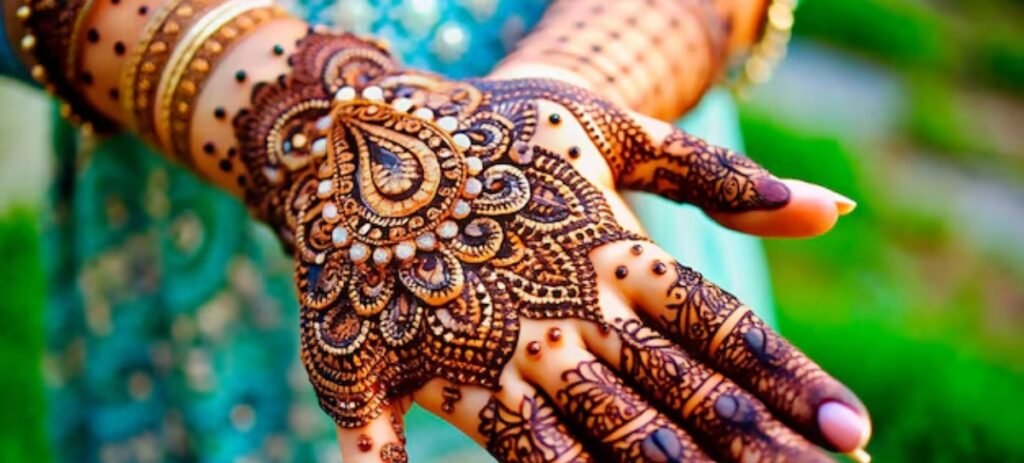
Paisley shapes, known for their intricate curves and elegance, are a staple in mehndi art. On fingers, paisley or teardrop motifs are scaled down and placed along the finger joints or tips.
This design can be combined with small dots and swirls for a detailed and textured appearance. Paisley finger mehndi designs are often chosen for bridal mehndi due to their ornate and regal feel.
5. Lace-Inspired Finger Mehndi
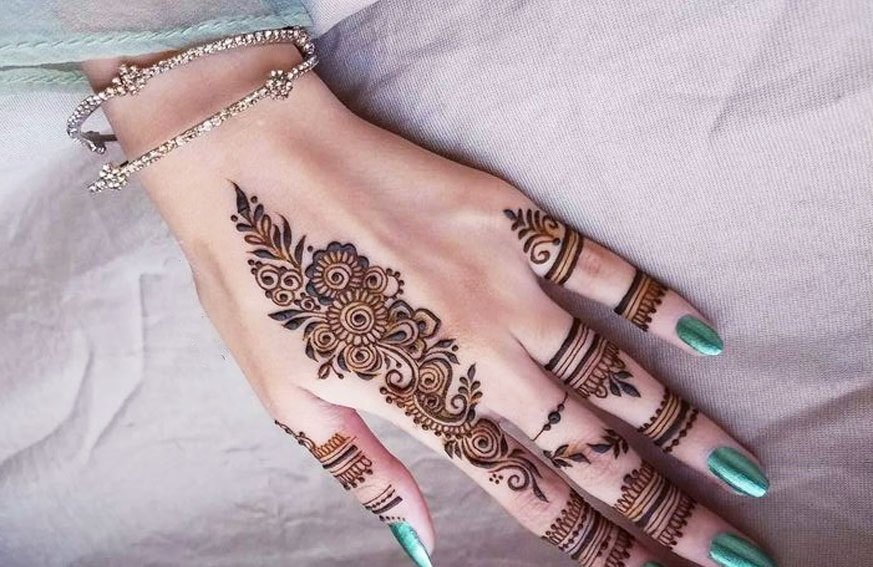
Lace-inspired mehndi designs mimic the delicate patterns found in lace fabric. These designs feature fine lines, mesh-like patterns, and tiny dots that create a web of elegance over the fingers.
This design style is perfect for formal occasions where subtlety and sophistication are desired. Lace mehndi on fingers can beautifully complement lace gowns or traditional attire with lace elements.
6. Minimalist Lines and Curves
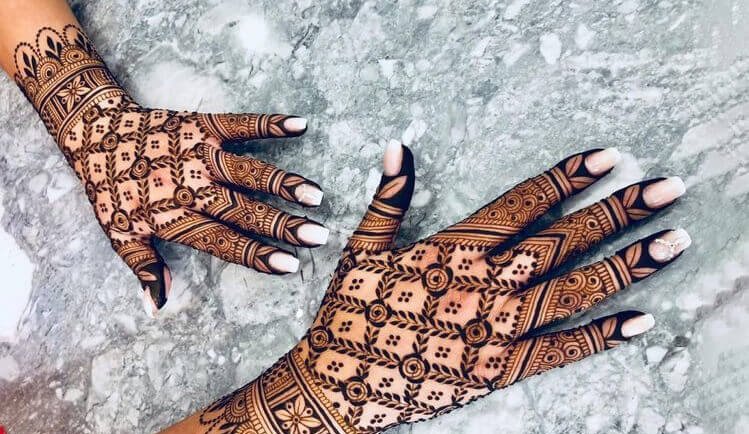
For those who prefer a clean and modern aesthetic, minimalist mehndi designs on fingers are an excellent choice. This style focuses on simple lines, gentle curves, and negative space.
A typical minimalist design might include a few parallel lines running along the finger or a simple curved line accentuating the knuckles. The minimalism allows the design to enhance the natural shape of the fingers without overwhelming them.
7. Mandala-Inspired Finger Mehndi
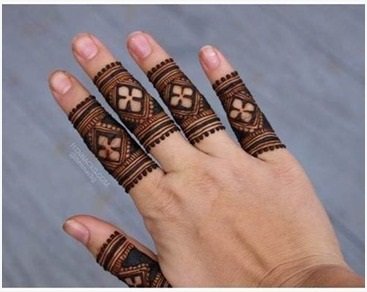
Mandala patterns symbolize unity and eternity and are characterized by circular, symmetrical shapes. On fingers, mandala designs are adapted into smaller circular motifs placed near the knuckles or the middle of the finger.
These designs are intricate and mesmerizing, often combining dots, lines, and petal shapes to create a balanced look. Mandala finger mehndi is especially popular for festivals and celebrations.
8. Finger Bands and Rings
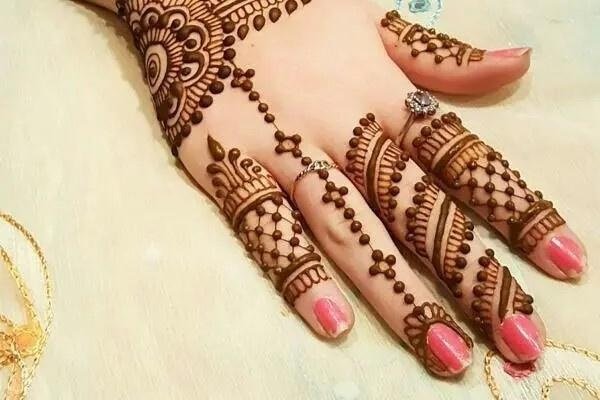
An innovative and trendy mehndi idea is to create designs that mimic jewelry like finger rings or bands. These designs wrap around the finger in thin or thick bands and often feature repetitive patterns such as dots, diamonds, or small flowers.
Finger band mehndi designs give the illusion of wearing actual rings and can be mixed and matched with other finger patterns. They are perfect for casual wear or to accentuate bridal mehndi.
9. Mesh and Net Patterns
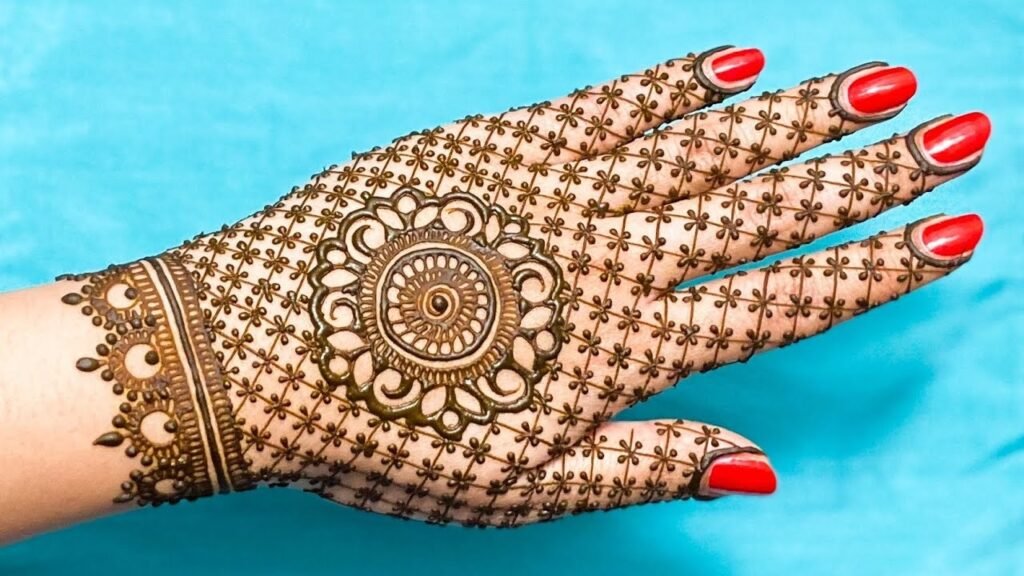
Mesh or net patterns use crisscrossing lines to create a net-like effect on the fingers. These patterns often have small dots or floral elements at the intersections.
This design provides a visually striking texture and can be used alone or with other motifs like flowers or paisleys. The mesh design is versatile and can be made bold or delicate depending on the thickness of the lines.
10. Peacock Feather Finger Designs
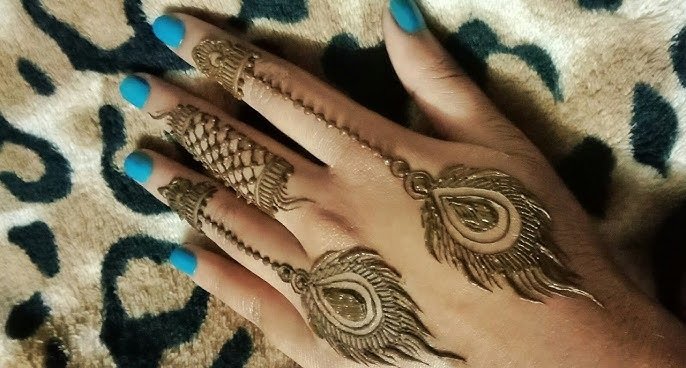
Peacock feathers are iconic motifs in mehndi design symbolizing beauty, pride, and grace. Miniature peacock feather designs on fingers, featuring the eye and intricate feather lines, are captivating.
This design is detailed and works well for brides or during festive events. Peacock feather mehndi adds a cultural richness and vibrant elegance to the fingers.
How to Choose the Right Finger Mehndi Design for You
Selecting the perfect mehndi design for your fingers depends on several factors:
- Occasion: Heavier, more detailed designs are ideal for weddings and festivals, while simpler patterns suit casual or daily wear.
- Skill Level: If you’re applying mehndi yourself, start with simpler designs like dots, lines, or bands.
- Hand Size and Finger Length: Longer fingers can carry more elongated designs, while shorter fingers may benefit from compact motifs.
- Personal Style: Choose a design that complements your outfit and personality, whether traditional, modern, or a fusion.
Tips for Applying Mehndi on Fingers
Applying mehndi on fingers requires precision and patience due to the limited space and curvature of the fingers. Here are some helpful tips:
- Clean and Dry Hands: Make sure your hands and fingers are clean and dry to help the mehndi paste adhere better.
- Use a Fine Cone: Use a mehndi cone with a fine tip for better control and detailed designs.
- Start with Outlines: Begin with the main outlines of your design, then fill in with smaller details.
- Be Patient: Take your time, as finger designs require steady hands and concentration.
- Drying and Aftercare: Let the mehndi dry completely and avoid washing hands immediately. Applying lemon-sugar solution helps darken the stain.
Table of Contents
Conclusion
Mehndi designs for fingers offer a beautiful blend of tradition, creativity, and elegance. Whether you prefer the simplicity of dotted tips or the intricate artistry of peacock feathers, there is a design to match every taste and occasion. The ten designs listed above are among the best, combining classic motifs with contemporary trends to help you adorn your fingers in style.
Trying out these mehndi designs not only enhances your hands but also connects you to a rich cultural heritage. So next time you think about mehndi, don’t forget to give your fingers their own unique spotlight with one of these exquisite patterns.
Also read Top 10 Hathi Mehndi Designs: A Symbol of Tradition, Strength, and Elegance


